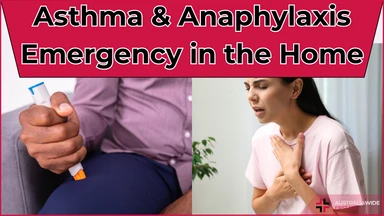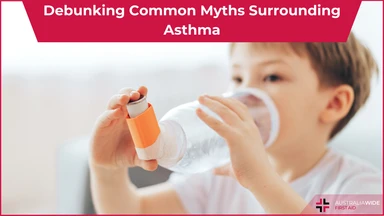What is Anaphylaxis?


Anaphylaxis, or anaphylactic shock, is a severe allergic reaction that can quickly become life threatening if not treated immediately.
Anaphylaxis generally occurs within 20 minutes to 2 hours after exposure to an allergen. It can affect more than one system in the body: the skin, as well as the respiratory, gastrointestinal and cardiovascular systems.
Anaphylaxis is the most severe type of allergic reaction. An allergic reaction is when a person’s immune system overreacts to a substance or ‘trigger’. This trigger, though it may be harmless to most people, is called an allergen.
When a person experiences an allergic reaction, their immune system creates antibodies to attack the allergen, which then sets off a range of immune system responses. For instance, the body releases chemicals, such as histamines, that are stored in blood and tissue cells.
These chemicals can cause the person experiencing an allergic reaction to go into shock, which subsequently results in a fall in blood pressure and a narrowing of the airways. For people with anaphylaxis, even minuscule exposure to their allergens can trigger a dangerous reaction. Immune systems can overreact to the point of death if it is not treated as a medical emergency. In fact, well-known ABC radio star Sarah Tomlinson died unexpectedly in November 2022 following an anaphylactic reaction. Tomlinson commenced her radio career at the young age of 14, before going on to win numerous community broadcasting awards. In fact, in 2006, she was named Radio Adelaide's Favourite Presenter.
Anaphylaxis is treated as a medical emergency, as many of the symptoms can quickly become life threatening. These symptoms include:
As well as severe symptoms, there is a range of less dangerous anaphylactic symptoms, including:
Although these symptoms are less alarming, they should be treated with just as much urgency as more severe symptoms. Anaphylactic shock can quickly escalate and the earlier it is treated, the better.
A range of allergens can cause someone to go into anaphylactic shock. Common triggers include:
More information about anaphylaxis triggers, including fire ant stings and anaesthesia, can be found in our Resource Library.
Though Anaphylaxis is not curable, it is preventable and treatable. Adrenaline auto-injectors, such as Epipen® and Anapen®, are carried by those who are at risk. These auto-injectors are designed to be used by anyone: a friend, childcare worker, parent, teacher, passer-by, or even the casualty themselves. To care for and treat a casualty experiencing anaphylaxis, the below steps should be followed:
For a demonstration on how to administer an EpiPen®, please watch the below video:
The adrenaline will reduce the effects of the reaction by causing the casualty's blood vessels to restrict and by increasing their heart rate. This will raise the casualty's blood pressure and improve their blood flow. The adrenaline will also relax the casualty's airway, thereby making it easier for them to breathe. More information about how to administer and manage adrenaline auto-injectors can be found in our Resource Library. The Australian Resuscitation Council's First Aid Management of Anaphylaxis Guideline 9.2.7 is also a useful resource for treating anaphylaxis.
Likewise, two of our most popular courses include first aid treatment for anaphylaxis:
In our HLTAID012 Adelaide course, as well as learning how to provide first aid for anaphylaxis, you will learn how to treat a variety of medical emergencies common in the education and care industry, including asthma. Head to our course page to book now!
Disclaimer: This article is for informational purposes only. It does not constitute, replace, or qualify as any form of first aid training.
If you want a more in-depth look at anaphylaxis at home or in the workplace, our online courses are the answer. You can complete them at your work desk or from the comfort of your own home, and get a Certificate of Completion to show your employer, add to your resume, or simply give you the peace of mind knowing you can actually help in an emergency. Our Anaphylaxis First Aid provides learners with the knowledge needed to recognise, respond to, and manage allergic reactions and anaphylaxis.
If you're after workplace-specific information, our Workplace Anaphylaxis Risk Management course covers responsibilities and best practices for managing anaphylaxis risk in workplaces. Alternatively, our Workplace Asthma and Anaphylaxis Management and First Aid course teaches the essential knowledge and practical tools to identify, manage, and respond to asthma and anaphylaxis risks in workplace settings.

October 2, 2013
In an asthma or anaphylaxis emergency you should know the symptoms, remove triggers, and know how to respond. Read on to understand these important aspects in the context of such an emergency.

May 7, 2024
Asthma, a chronic respiratory condition affecting millions worldwide, is often shrouded in myths and misconceptions. Despite how common it is, there is a distinct lack of common knowledge. This is leading to potential mismanagement and unnecessary anxiety for those living with asthma.

February 19, 2024
For many Australians, our city and outdoor lifestyles come with a hidden challenge – dust allergies. Dust mites, pollen, and other airborne particles can trigger allergic reactions, affecting a significant portion of the population.